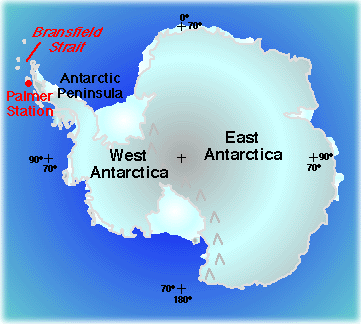
|
|






Shawn Beightol is the Science Instructor for the Agriscience Academy of William H. Turner Technical Arts High School, a two time nationally recognized high school in Miami, Florida (New Urban High Schools and New American High Schools). He has taught there for the 5 years of his public education career. Shawn specializes in teaching the standard science curriculum (biology, chemistry and physical science) in a non-standard manner to urban students who have indicated an interest in agriscience careers (from veterinarian science to biochemistry to horticulture). Using simulations and problem based instruction, students are actively engaged in learning their various skills and contents of the parcticular disciplines. For example, this past year, students solved several problems related to establishing a sustainable colony on Mars, such as building a plastic dome in the classroom with a maximum volume to surface area ratio, building a solar powered hydroponics unit, and self-contained composting units.
Shawn came to Miami from central Florida to attend Miami Christian College.
While there, he worked with a juvenile offenders program that raised his interest in the sociological challenges of urban America. After working for several years as a youth pastor in an urban multicultural church, he returned to college (Florida International University at Miami) to study Chemistry and Education to use his love of science as a means to contribute to opening options for young people's futures.
Currently, aside from the regular classes that he teaches, he sponsors a very active science club, teaches an after-school pre-engineering class, serves as a Master Teacher with SECME, Inc (a precollege, pre-engineering program whose aim is to increase parcticipation of under-represented populations in scientific and mathematical careers), and teaches a course on math methods to elementary education students at Florida International University.
Shawn is looking forward to traveling to the antarctic and experiencing what he and his students refer to as "Extreme Science" - science that is groundbreaking and occuring in a dynamic environment. He and his students are gearing up for their next simulation - "Ice Station Palmer," where the problem will be to establish a self-sustaining science research center on the ice. Upon departure in April, he intends to bring his students into the antarctic picture as much as possible by attempting to establish video-conferencing and providing remote access of student designed weather and atmospheric monitors via the World Wide Web.

A survey of Hydrothermal Vents in Bransfield Straits
Dr. Gary Klinkhammer,
Oregon State University
College of Oceanic & Atmospheric Sciences,
Corvallis, Oregon
Gary Klinkhammer, of Oregon State University, is exploring a unique region off the Antarctic Peninsula where continental crust is rifting apart, perhaps like the Gulf of California opened in its earlier stages of evolution. Hydrothermal vents have been found near this rift, where plumes of hot water with dissolved minerals are spewing forth, possibly from natural smokestacks called "black smokers." The study will add to knowledge of volcanic processes and mineral formation in a rift zone. Unusual communities of deep-sea life, known to inhabit hot vents, could also live here, but have not yet been found at these high polar latitudes. The project will continue to search for hydrothermal vents by towing a special instrument package called a ZAPS sled near the bottom of the ocean at a depth of about 2 kilometers. The instruments on the sled measure metal content of the sea water and other characteristics that allow detection of plumes from hydrothermal vents.
So far, data suggests hydrothermal activity in several areas. At one of these locations in the central basin the exploration has advanced to the site survey stage. Along a ridge of pillow basalts in the central basin known as the "great wall," a hydrothermal plume was detected that has a turbidity signal comparable to that observed at the TAG mound on the Mid-Atlantic Ridge. This plume is the first clear evidence of high-temperature, black smoker vents in the Bransfield Strait.
Learn more about the Bransfield
Strait Hydrothermal Expedition


May 1999
| Su |
Mo |
Tu |
We |
Th |
Fr |
Sa |
| -- |
-- |
-- |
-- |
-- |
-- |
1 |
| 2 |
3 |
4 |
5 |
6 |
7 |
8 |
| 9 |
10 |
11 |
12 |
13 |
14 |
15 |
| 16 |
17 |
18 |
19 |
20 |
21 |
22 |
| 23 |
24 |
25 |
26 |
27 |
28 |
29 |
| 30 |
31 |
-- |
-- |
-- |
-- |
-- |
April 1999
August 1998
| Su |
Mo |
Tu |
We |
Th |
Fr |
Sa |
| -- |
-- |
-- |
-- |
-- |
-- |
1 |
| 2 |
3 |
4 |
5 |
6 |
7 |
8 |
| 9 |
10 |
11 |
12 |
13 |
14 |
15 |
| 16 |
17 |
18 |
19 |
20 |
21 |
22 |
| 23 |
24 |
25 |
26 |
27 |
28 |
29 |
| 30 |
31 |
-- |
-- |
-- |
-- |
-- |
July 1998
| Su |
Mo |
Tu |
We |
Th |
Fr |
Sa |
| -- |
-- |
-- |
1 |
2 |
3 |
4 |
| 5 |
6 |
7 |
8 |
9 |
10 |
11 |
| 12 |
13 |
14 |
15 |
16 |
17 |
18 |
| 19 |
20 |
21 |
22 |
23 |
24 |
25 |
| 26 |
27 |
28 |
29 |
30 |
31 |
-- |
Return to top of page
|







